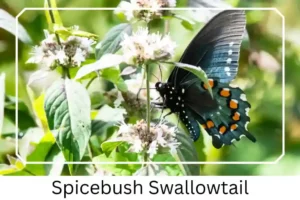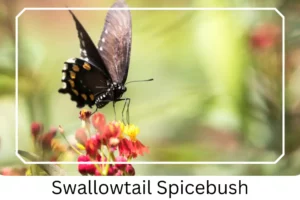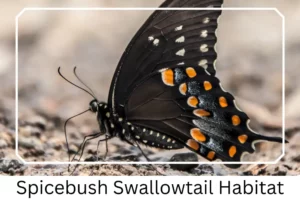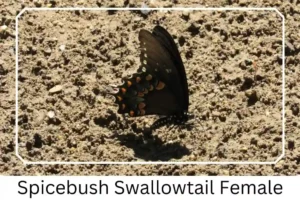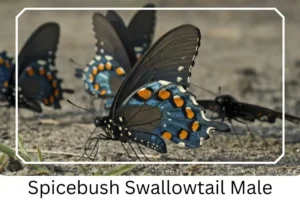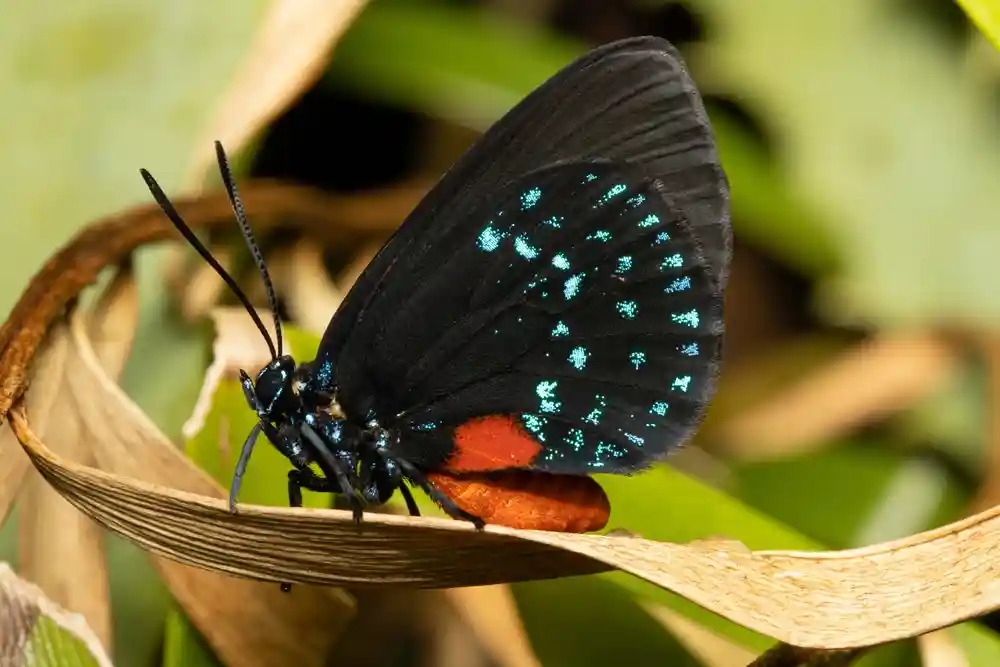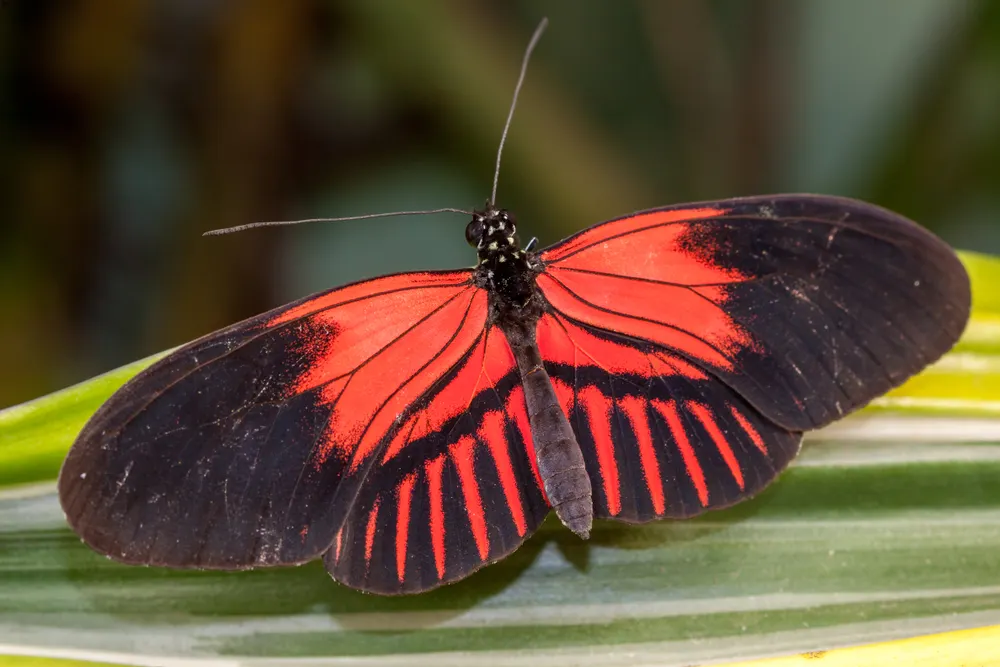Spicebush Swallowtail (Papilio troilus)
The Spicebush Swallowtail butterfly, a captivating species, thrives across various North American regions, showcasing the beauty and complexity of our natural world. This butterfly is named after its preferred host plant, the Spicebush, and it graces the skies with its presence from April to October, offering a spectacular view for nature enthusiasts and researchers alike.
Scientific Classification
- Family: Papilio troilus
- Genus: Papilio
- Scientific Name: Papilio troilus
Overview
The Spicebush Swallowtail plays a crucial role in the ecosystem, acting as both a pollinator and a part of the food web. Understanding its life cycle, habitat preferences, and behaviors contributes to our knowledge of biodiversity and ecosystem dynamics. This guide aims to provide a comprehensive overview of the Spicebush Swallowtail, enriching our appreciation for this remarkable butterfly.
Description and Identification
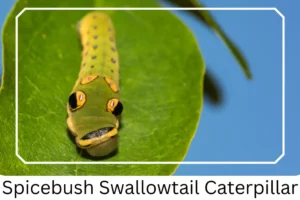
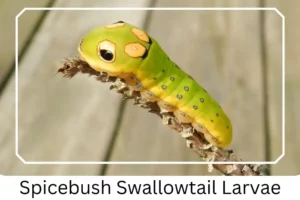 Caterpillar
Caterpillar
Initially, the Spicebush Swallowtail caterpillar’s design mimics bird droppings, offering camouflage against predators. As it matures, it transforms to resemble a snake, with prominent eyespots in later stages, enhancing its defense mechanism through mimicry.
Pupa
The chrysalis phase shows adaptability; winter pupae blend with their surroundings by mimicking dead leaves through a brown coloration, while spring and summer pupae are green, mirroring the fresh foliage to stay hidden from threats.
Adult Butterfly
Sexual Dimorphism: Present but subtle, with slight variations in color and pattern between males and females.
Color and Appearance: The adult Spicebush Swallowtail exhibits a striking appearance. The dorsal side of its wings is predominantly black with patterns of ivory or dull white spots along the margins. The hindwings feature orange spots on the coastal margins and possess scales that give a bluish-green sheen to males and a bluish sheen to females. The ventral side of the hindwings showcases pale green marginal spots when the wings are closed.
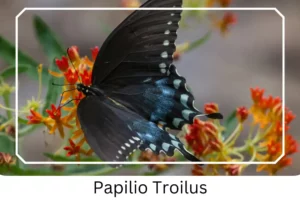 Average Wingspan: Ranges from 3 to 4 inches (7.5 to 10 cm), making it a medium to large butterfly.
Average Wingspan: Ranges from 3 to 4 inches (7.5 to 10 cm), making it a medium to large butterfly.
Flight Pattern: Characterized by low, relaxed flops close to the ground, providing a graceful display.
Eggs
The eggs are rounded and light-colored, typically laid singly on the underside of leaves of the host plant, ensuring safety and nourishment for the emerging larvae.
Quick Facts | |
| Distribution | Widely found in the eastern regions from southern Canada to Florida, extending to western Oklahoma and central Texas. |
| Habitat | Flourishes in a variety of settings including yards, pine barrens, wooded swamps, deciduous woodlands, fields, roadsides, and parks. |
| Lifespan of Adults | Ranges from 2 to 14 days, highlighting the ephemeral nature of their adult stage. |
| Host Plants | Favors Spicebush, sassafras trees, prickly ash, tulip tree, sweetbay, camphor, and redbay for laying eggs and feeding larvae. |
| Adult Diet | Primarily feeds on the nectar of flowers, contributing to pollination. |
How to Identify Spicebush Swallowtail?
Identifying the Spicebush Swallowtail can be an intriguing and rewarding experience. Look for its distinct black wings adorned with spots of dull white or ivory along the margins when the wings are open. The presence of orange spots on the hindwings’ coastal margins and the unique bluish or greenish sheen distinguishing males from females are key characteristics. The larvae stage offers a fascinating glimpse into nature’s mimicry, resembling bird droppings initially and later adopting a snake-like appearance with eyespots.
Did You Know?
- The Spicebush Swallowtail is one of the few butterfly species that flutter their wings continuously while feeding, a unique behavior that distinguishes them from other butterflies.
- This species exhibits remarkable mimicry throughout its life cycle, from larvae resembling bird droppings to snake-like appearances, and pupae mimicking dead leaves or fresh foliage for camouflage.
Conclusion
The Spicebush Swallowtail butterfly is not just a marvel of nature’s design but also an integral part of the ecosystem, contributing to the pollination of various plants. By understanding its life cycle, habitat, and behavior, we can better appreciate the complexity and beauty of the natural world. Conservation efforts and habitat preservation are crucial to ensure that future generations can continue to enjoy the sight of these magnificent butterflies in flight.

